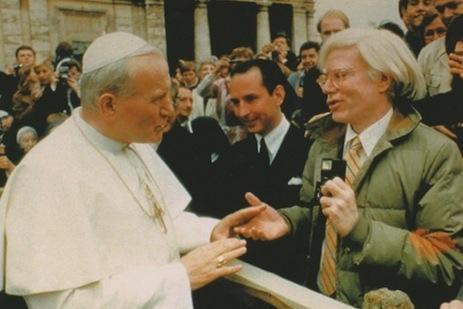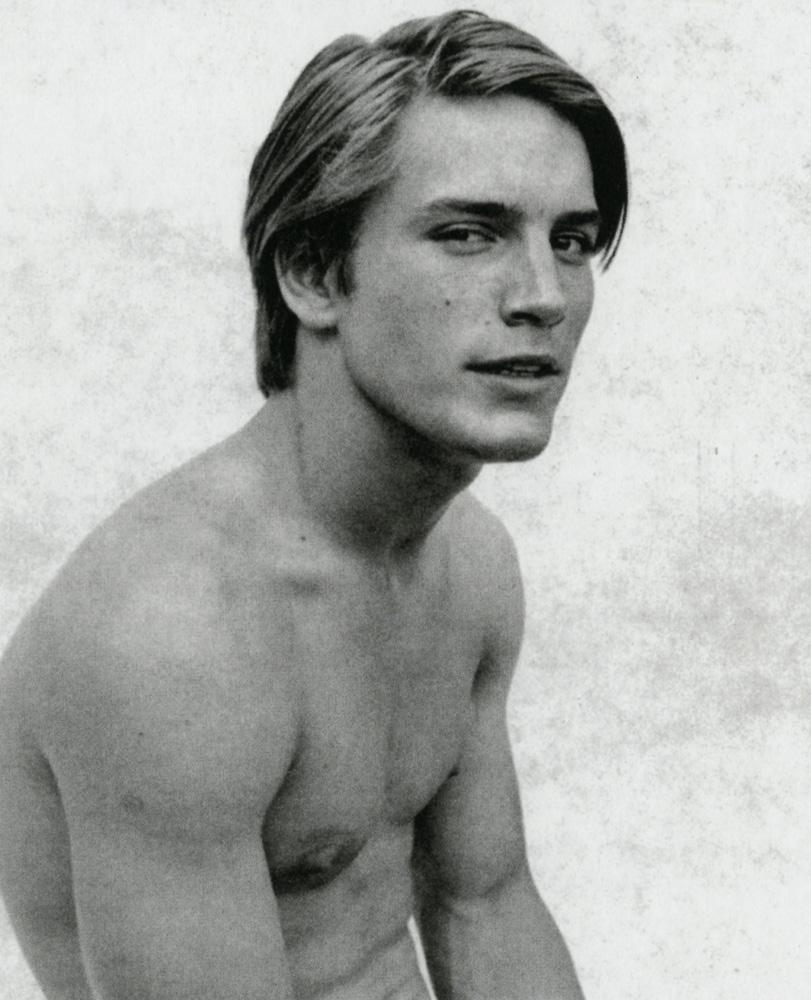Everybody has a Warhol story….it’s incredible! So it’s difficult to tell the truth from what it’s just a myth, especially in the internet.
Karen Lautanen, Director of Development at The Andy Warhol Museum (in plain English: I am a fund raiser, she explains), tells me on the phone after reading my first draft of this article about Andy Warhol’s facts and biography, which was researched on the internet, and therefore full of mistakes. So I thought that nobody better than she could edit it and tell me what is really a Warhol fact. Andy Warhol has fascinated generations and is still more popular than a rock star – no wonder that so much of the information about him is incorrect. Like every icon, he has inspired people for stories, myths and adoration.
So here are the real Warhol facts.
The 10 Facts About Warhol:
1. The Warhola Immigrants
Warhol’s birth name was Andrew Warhola, but later in life he would drop the final “a” from his last name to pursue his studies and career in New York. Andy was born in Pittsburgh, Pennsylvania, where The Andy Warhol Museum , the largest museum in America dedicated to a single artist, is located.
His parents, Ondrej Varhola and Julia, were immigrants from Slovakia. His father was a laborer and his mother used to earn a small income by cleaning houses and making handicrafts.

Andy Warhol’s mother, Julia Warhola, in a portrait by the artist. Photo: entertainmentcentralpittsburgh.com
2. Celebrity Love
Warhol’s interest in celebrity culture – one of his richest veins as an artist – began early in life. As a child, Andy would occupy himself with comics and celebrity tabloid magazines. During the Great Depression going to the cinema was a common way to ease the mind in a time of adversity. At the time, the price of admission included a glossy photo of the film’s star. Warhol’s childhood scrapbook still survives today; the collection includes a signed photo of Shirley Temple and another of Mae West.

Andy Warhol with actress Farrah Fawcett. Many of his subjects were showbiz friends who frequented the same nightclubs as Warhol or visited his luxurious beach house or vast ‘factory’. They included the likes of John Lennon, Mick Jagger, Elizabeth Taylor, Madonna, Sting, Bruce Springstein, Lizi Minnelli, Diana Ross and Debbie Harry. Photo: art-news.com.ua
3. Consumer Culture
Since Warhol came from a working-class family, he wholeheartedly shared the twentieth-century American working class’s ardor for the products of consumer culture. He felt the consumer-media explosion of the early sixties more intensely than his colleagues, write Sherman and Dalton in their book PoP:The Genius of Andy Warhol.
4. Fervent Catholic
Andy was a fervent Byzantine Catholic and went to Mass every day. Yes – you read it well – every day. According to art historian Sir John Richardson, this is the reason of Warhol’s use of repetition of imagery (mirroring the repetition of Catholic rituals). Watch his explanation in the video here.
5. Andy’s Loves
Warhol was also notable as a gay man who lived openly as such before the gay liberation movement.
The most important men in his life have been:
Jed Johnson, and American interior designer and film director initially hired by Andy for the Factory. He picked out a townhouse for Warhol on East 66th street and designed its interiors, and he subsequently lived there with Warhol for a number of years.
Jon Gould, who was a 27-year-old Paramount Pictures executive at the time he met Andy (1980). Warhol and Gould remained together for five years and in 1986, at the age of 33, Gould died of AIDS. Gould is the most photographed subject of Warhol’s oeuvre.
John Giorno is an American poet and performance artist. He is still a working artist, founded the not-for-profit production company Giorno Poetry Systems and organized a number of early multimedia poetry experiments and events, including Dial-A-Poem. He became prominent as the subject of Andy’s film Sleep (1963). He is also an Aids activist and fundraiser.
6. Mother’s Darling
Warhol was a self-proclaimed “Mama’s Boy.” He was very close to his mother and she was also the inspiration behind many of his art works. She moved to New York in 1952 in order to live with Andy. Andy at times also got his art and paintings signed from his mother.
7. Fashion Illustrator and Writer
In 1949, after earning a BFA degree from the Carnegie Institute of Technology in Pittsburgh, Warhol went to New York City. He began designing in advertisements and went on to specialize in illustrating shoes.
His earliest work was for a magazine titled “Glamour.” It was his first ever assignment in which he was given a task to write an article. The title was “Success is a Job in New York.”
From 1949 to 1959, Warhol worked for Vogue, Harper’s Bazaar, The New Yorker, and other high-profile clients.
8. Grey Hair
Warhol had an interesting sense of style; he wore silver wigs and eventually dyed his hair silver.
9. Social Disease
Andy Warhol became a fixture at Studio 54, the legendary New York nightclub that was a celebrity magnet in the late 1970s. He was photographed there by paparazzi, including the indefatigable Ron Gallela, whom Warhol called his favourite photographer.
Gallela’s camera followed Warhol and his glamorous circle and their nonstop party. I have a social disease, said Warhol. I have to go out every night. If I stay home one night I start spreading rumours to my dogs.
10. Cardboard Boxes
From the ’50s through the ’70s, Andy always kept a standard-size cardboard box beside his desk that he would fill with interesting ephemera. Each box would be taped and dated when it was full. At the time of his death, Andy had assembled over 610 “Time Capsules”by the time of his death.
Films
In 1965, Warhol announced that he was retiring from art and planning to devote himself to film.
In 1967, the FBI reported on Warhol’s activities while he was on location in Arizona for his film, Lonesome Cowboys.
Warhol appeared in the 1973 film The Driver’s Seat, with Elizabeth Taylor.
He also designed the poster for the 5th New York Film Festival.
Music
In 1967, Warhol designed the cover of the Velvet Underground and Nico, and also produced the album.
In 1971, in a collaboration with Craig Braun, he designed the cover of Rolling Stones Album Sticky Fingers.
In 1975, Warhol produced the 1975 musical Man on the Moon.
In 1984, Warhol made a music video for “Hello Again” by The Cars. He also appeared in the video.
TV
In 1981, Warhol produced and starred in three one-minute episodes of Andy Warhol’s TV for Saturday Night Live.
In 1983, he starred in a television commercial for Japanese electronic manufacturer TDK.
In 1085, he guest-starred in the 200th episode of The Love Boat in 1985.
He also appeared in a TV ad for Diet Coke .
In 1986 Warhol created two cable television shows: Andy Warhol’s TV in 1982 and Andy Warhol ‘s Fifteen Minutes for MTV.
Shot for Being Andy Warhol
Warhol was shot three times in the chest by Valerie Solanis, an ardent feminist and one of many who thought Warhol was abusive and controlling. She thought that he deserved to die. Warhol was at one point pronounced dead, but was revived in hospital and slowly recovered. Valerie was a founder of club called SCUM (Society for Cutting Up Men) and she was the only member of the group.
Being famous isn’t all that important, Warhol wrote. If I weren’t famous, I wouldn’t have been shot for being Andy Warhol.
Collaborations
Warhol collaborated with Jean-Michel Basquiat, Marcel Duchamp, Francesco Clemente, and Keith Haring in the 1980s.
People Around Andy
For all those who are familiar with Andy’s life, this list will be by no means complete. Andy was surrounded by a number of people who were a big part of his life and work. Among them American actor, sex symbol and Warhol superstar Joe Dallesandro. Transgender actresses Candy Darling and Holly Woodlawn, Nico (vocal collaborator of the Velvet Underground in their first album and solo artist) and many more can be added to the list.
Death
He died in hospital on February 22nd, 1987 from a heart attack after a routine gallbladder surgery. Warhol is buried at St. John the Baptist Byzantine Catholic Cemetery in Pittsburgh, Pennsylvania.
If you want to see some examples of how pop art influenced fashion, read Pop Art and Fashion: Painting on Clothes – and on Life! on Ask the Monsters.





























